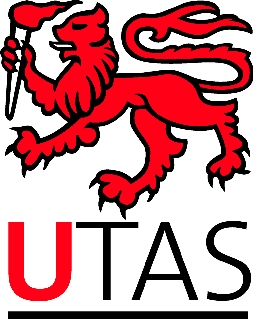
The MIFETM
system
for non-invasive measurement of specific fluxes in solution
near living
plant or animal tissue

 |
The MIFETM
system
|  |
| Home UTas Biophysics Lab Shabala Lab MIFE Research Facility MIFE user group Overview MIFE theory Hardware Software Purchasing |
Overview of the MIFE system for Microelectrode ion flux measurementTheory. Chemicals in solution move under the influence of chemical forces of diffusion directed towards lower concentration regions. Ions, which are charged, also experience electrical forces if an electric field is present as well. The movement of an ion in solution can be described in terms of these chemical and electrical driving forces and other parameters of the ion and solution. It can be shown that the net flux of an ion, typically measured in units of nmol m-2 s-1, may be found from a measurement of the change in voltage of an ion selective microelectrode that is moved through a small known distance in the solution. This technique allows non-invasive measurement of net ion fluxes through a tissue boundary with resolution of 10 seconds in time and 20 micrometer in position. Neutral molecule fluxes, including oxygen and carbon dioxide, may also be measured using the appropriate censor electrode and applying the appropriate theory. A microscope is used to observe the microelectrodes and the tissue near which they are moved. There are useful references to work done on the basis of this theory.The MIFE system described below, and in more detail in the review below, was developed in Tasmania and is available commercially. Another system, which is based on the Vibrating Probe, was developed at Woods Hole in the USA and has been used by Jaffe and various co-workers (eg Kuhtreiber & Jaffe, 1990). Hardware. The MIFE system uses a stepper motor-driven micromanipulator to move, in a "square wave", four microelectrodes that measure the electrochemical potential of the ions at two positions in solution close to a tissue surface. Software. The CHART DOS-based software package controls data acquisition by the MIFE hardware system. This software allows automated and interactive real-time control of the amplifier configuration and the micromanipulator while the data is being collected and written to disk. The system configuration is recorded together with the data, and all modifications during data acquisition are recorded in a log file which can also include annotations typed during the experiment. Up to 8 channels of data are displayed on the screen as if on a chart recorder. Any region of the “chart” can be inspected (and expanded or contracted) at will without interrupting the measurements. The software allows subsequent recall and display of any run. It also allows the export of the raw or averaged data in the form of an ASCII file for import into a spreadsheet or other program. The system will also function as an excellent electrometer/recorder with a 10 Hz bandwidth for microelectrode studies of membrane potential or for any other data acquisition. MIFEFLUX was developed to implement the flux calculations according to the published procedures and to provide the necessary software for purchasers of the MIFE amplifiers and controller. It takes output files from CHART and produces convenient ASCII text files for spreadsheet importing. Users who wish to modify the analysis routines will require their own copy of Turbo Pascal or Borland Pascal to edit and compile the Pascal source code which can be provided to MIFE system purchasers. Commercial data manipulating and display software will be needed to graph the calculated fluxes or other data. [to top of page] Review abstract.
Ian A Newman (2001) Ion
transport in roots: measurement of fluxes using ion-selective microelectrodes to
characterise transporter function.
Plant,
Cell & Environment 24(1), 1-14. [Invited Review] |
Maintained by Ian Newman. Date . © 2007 University of Tasmania.